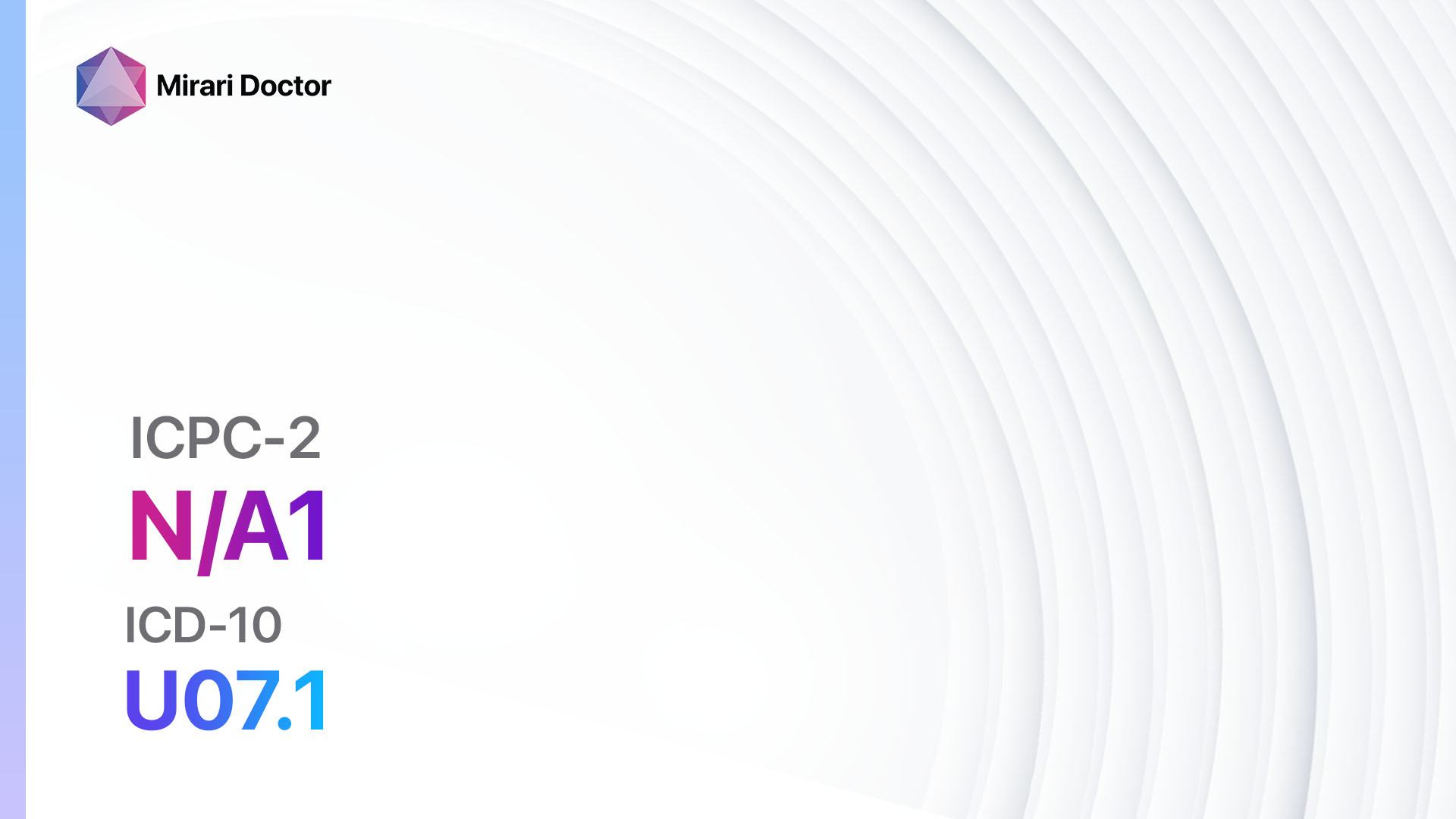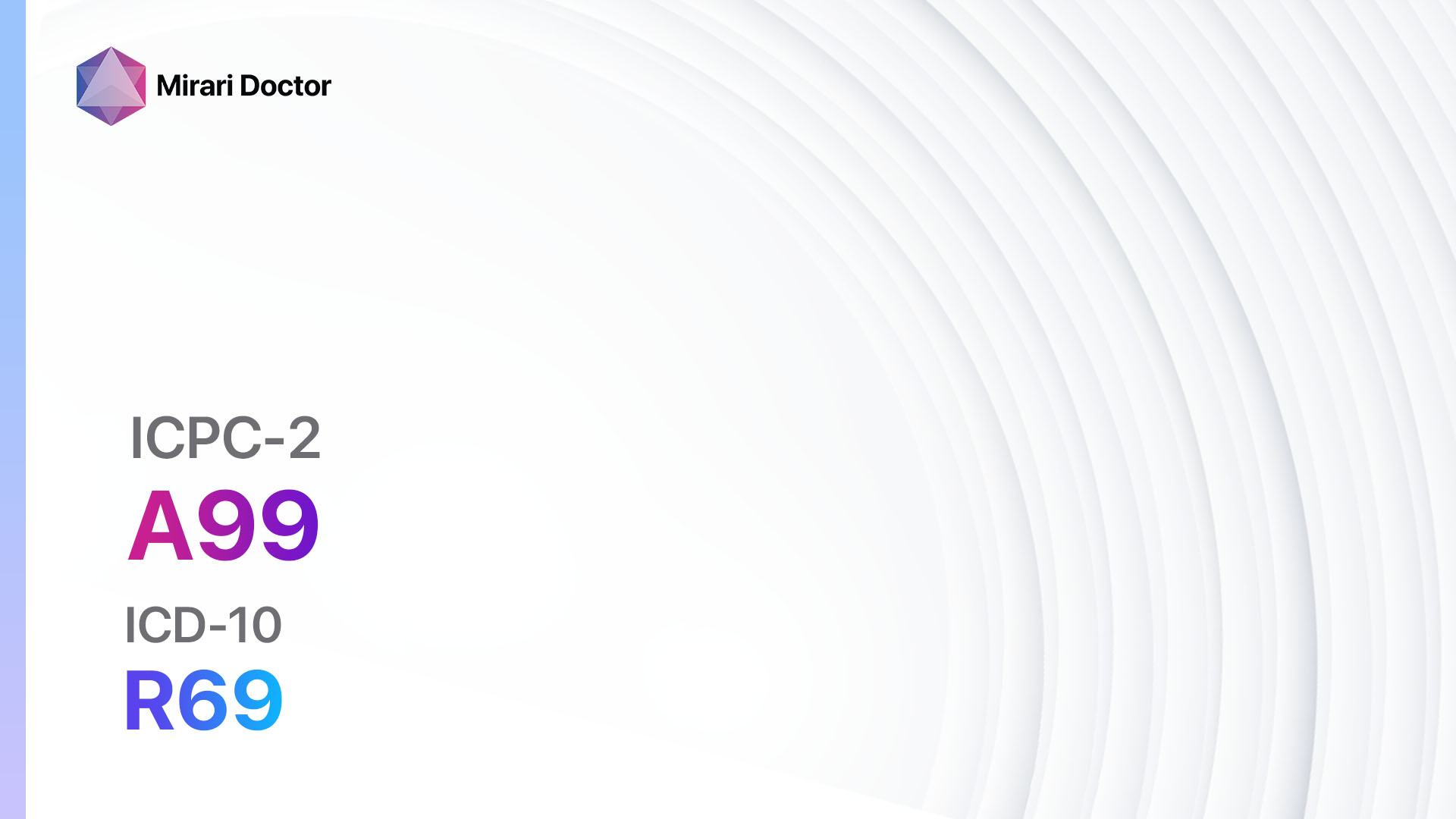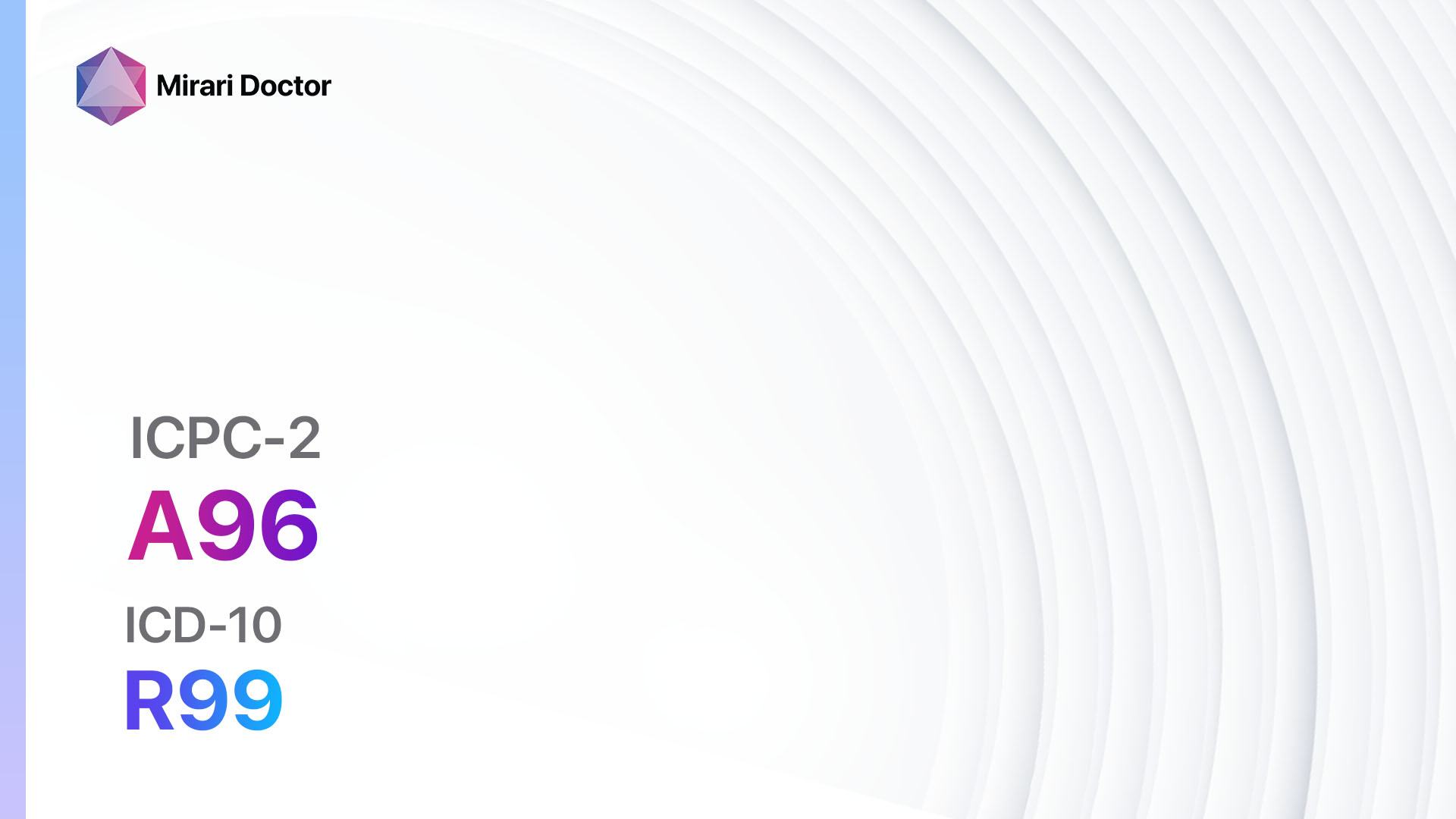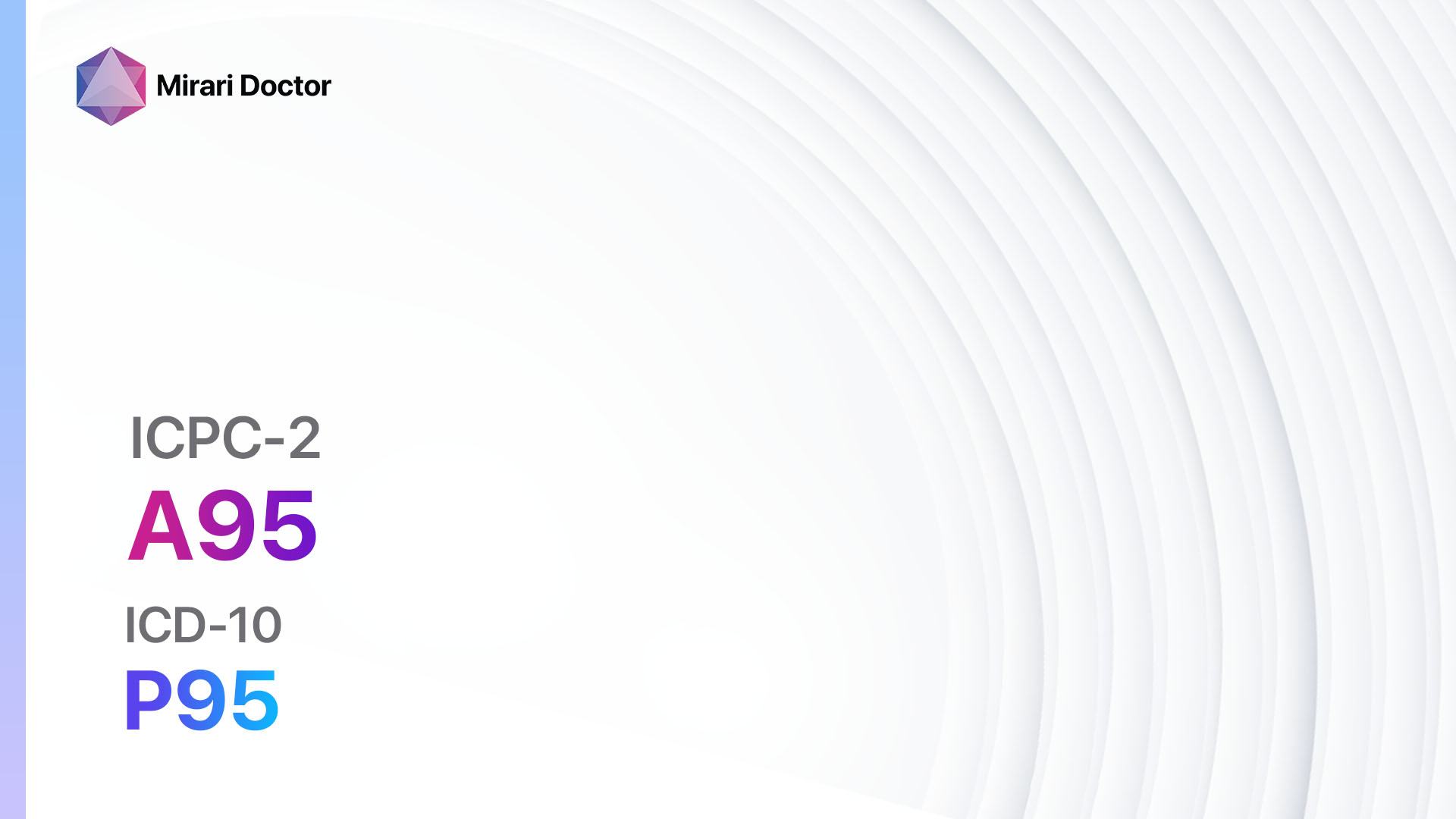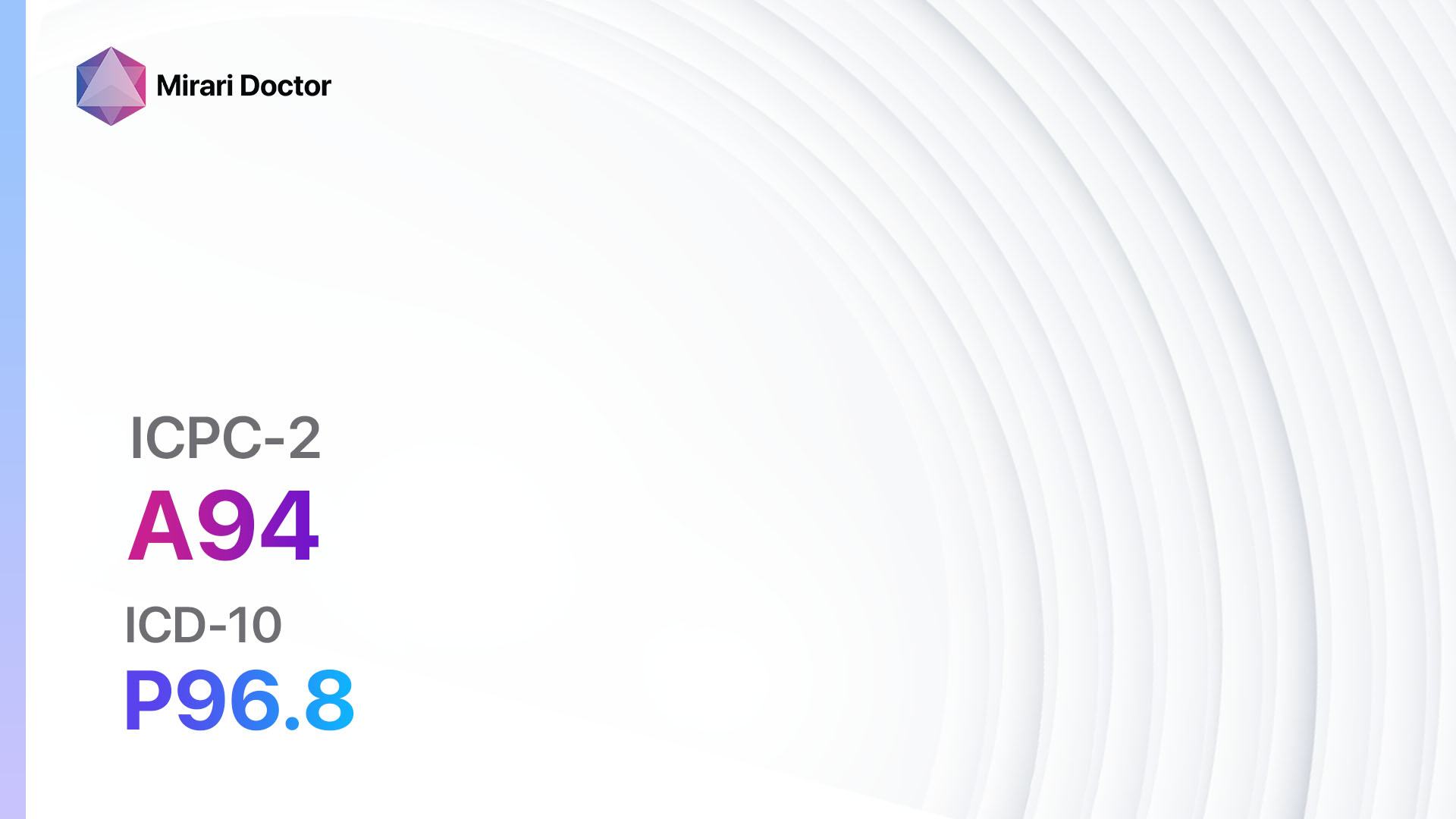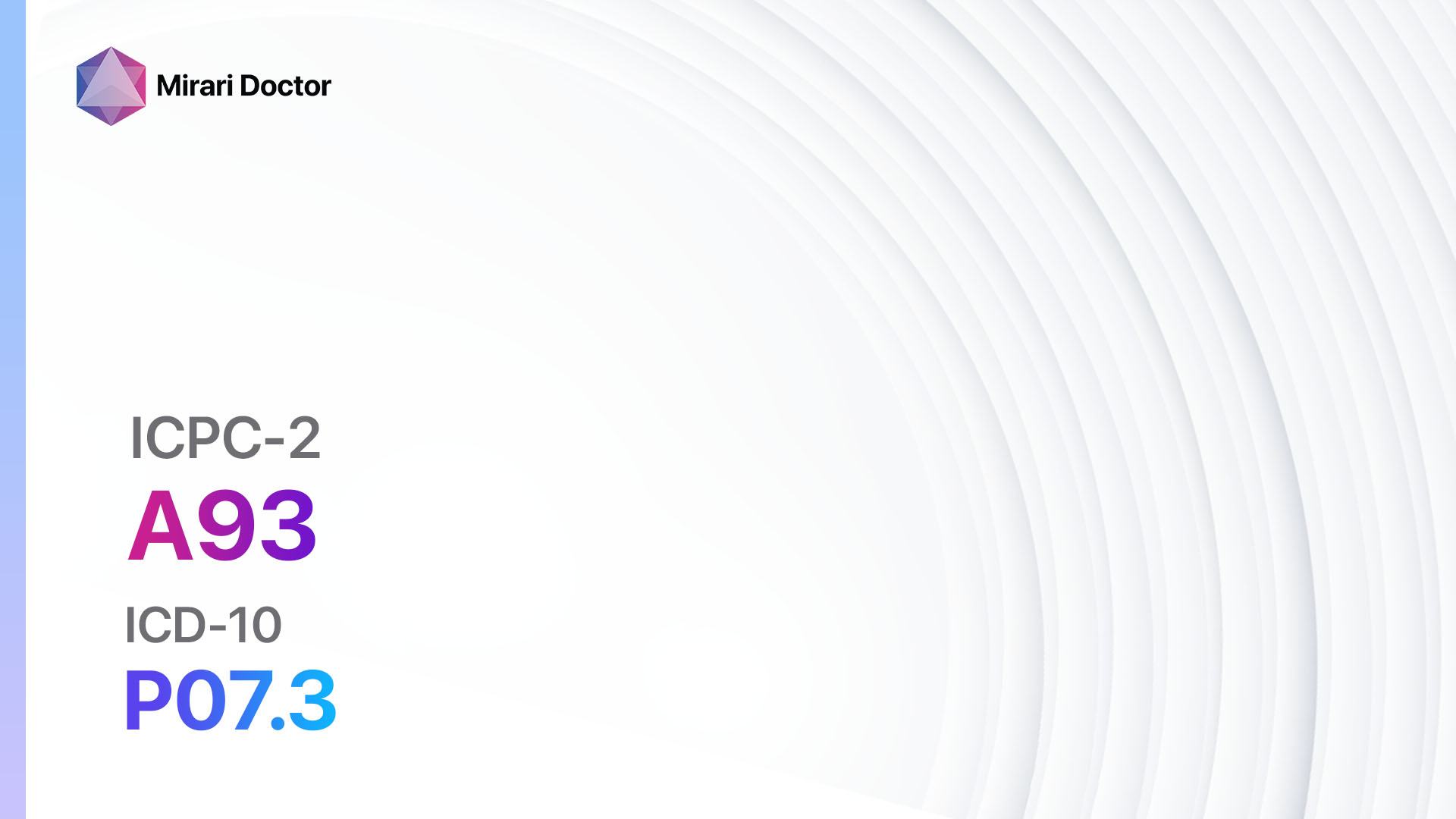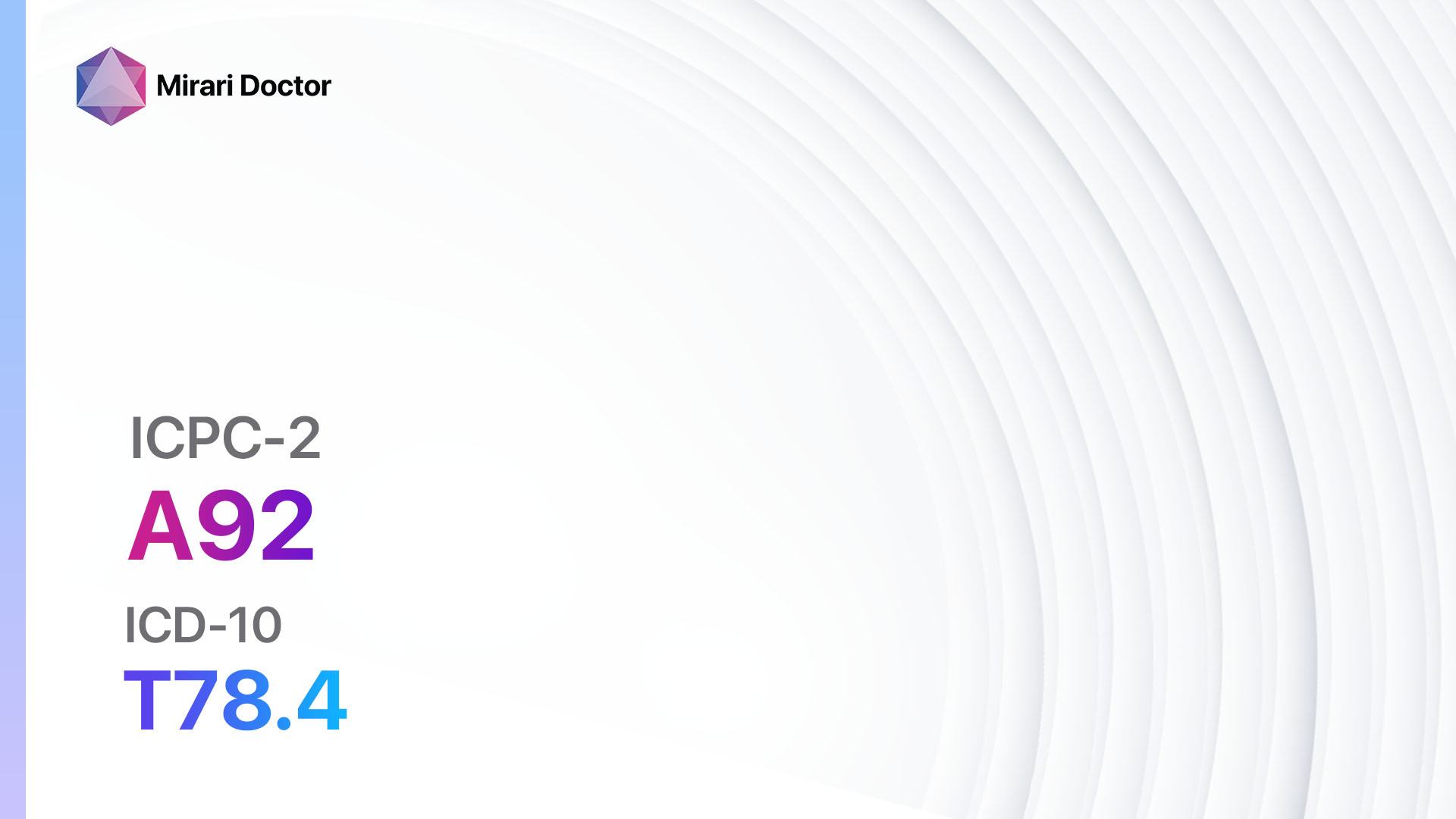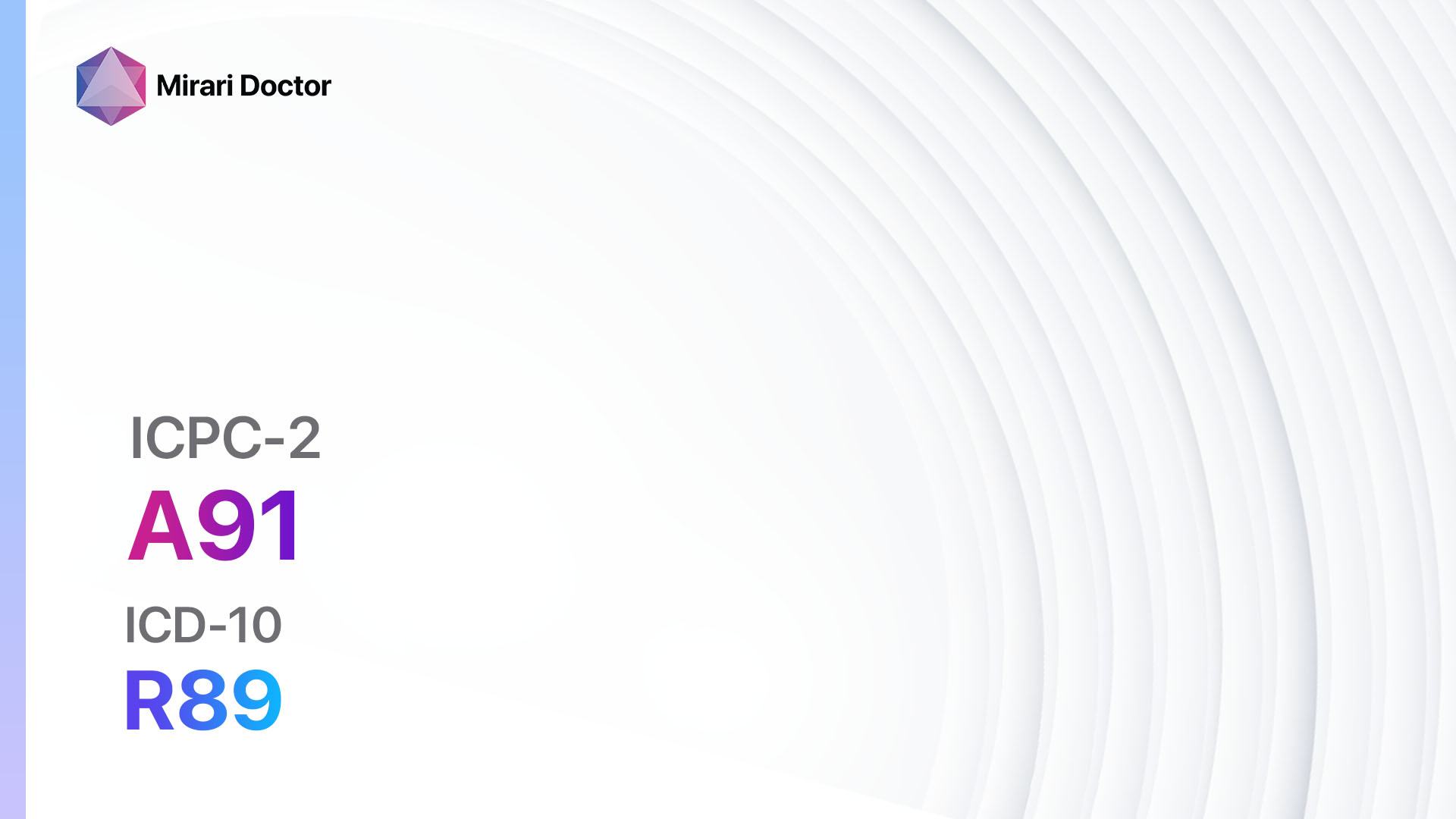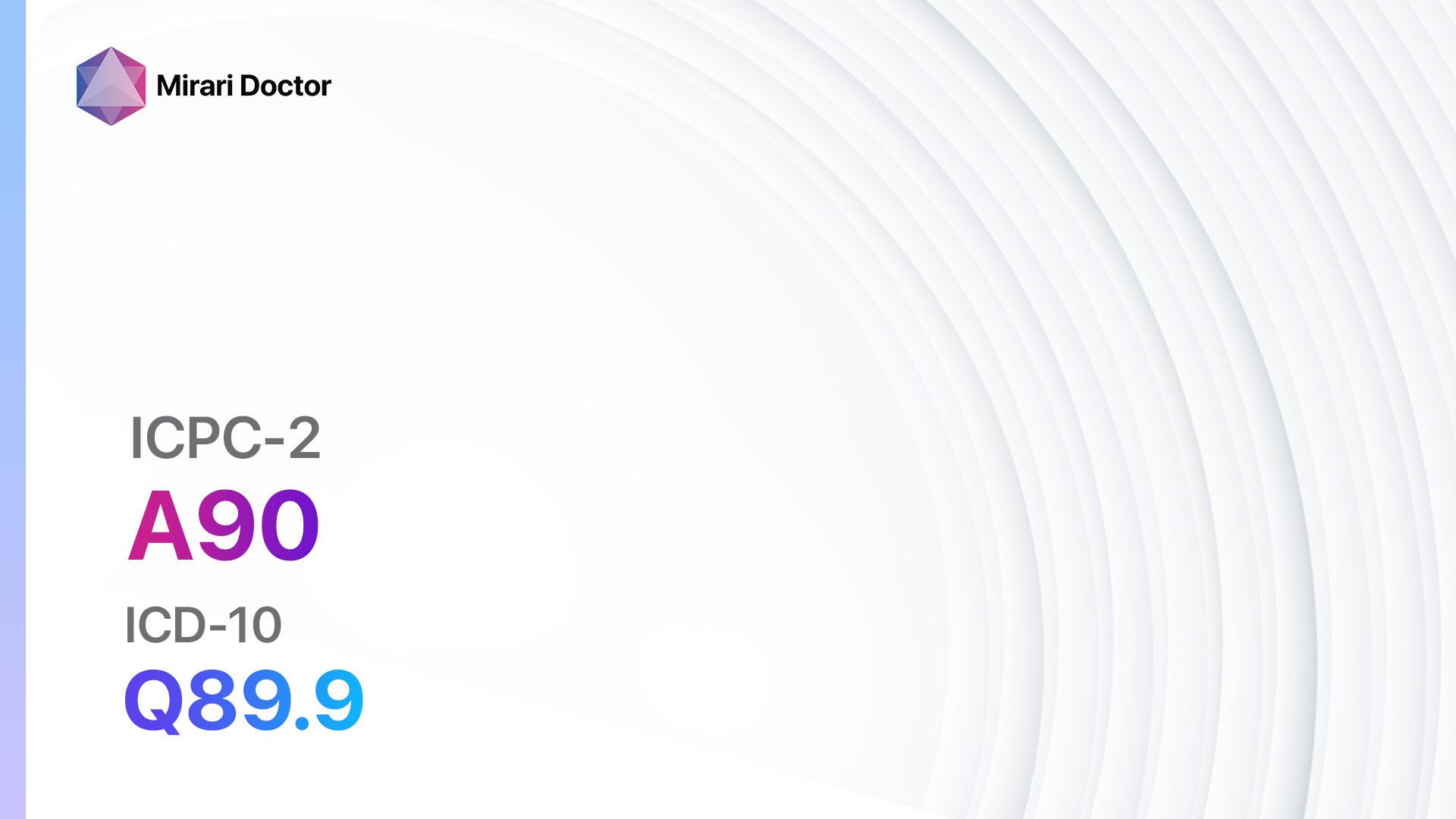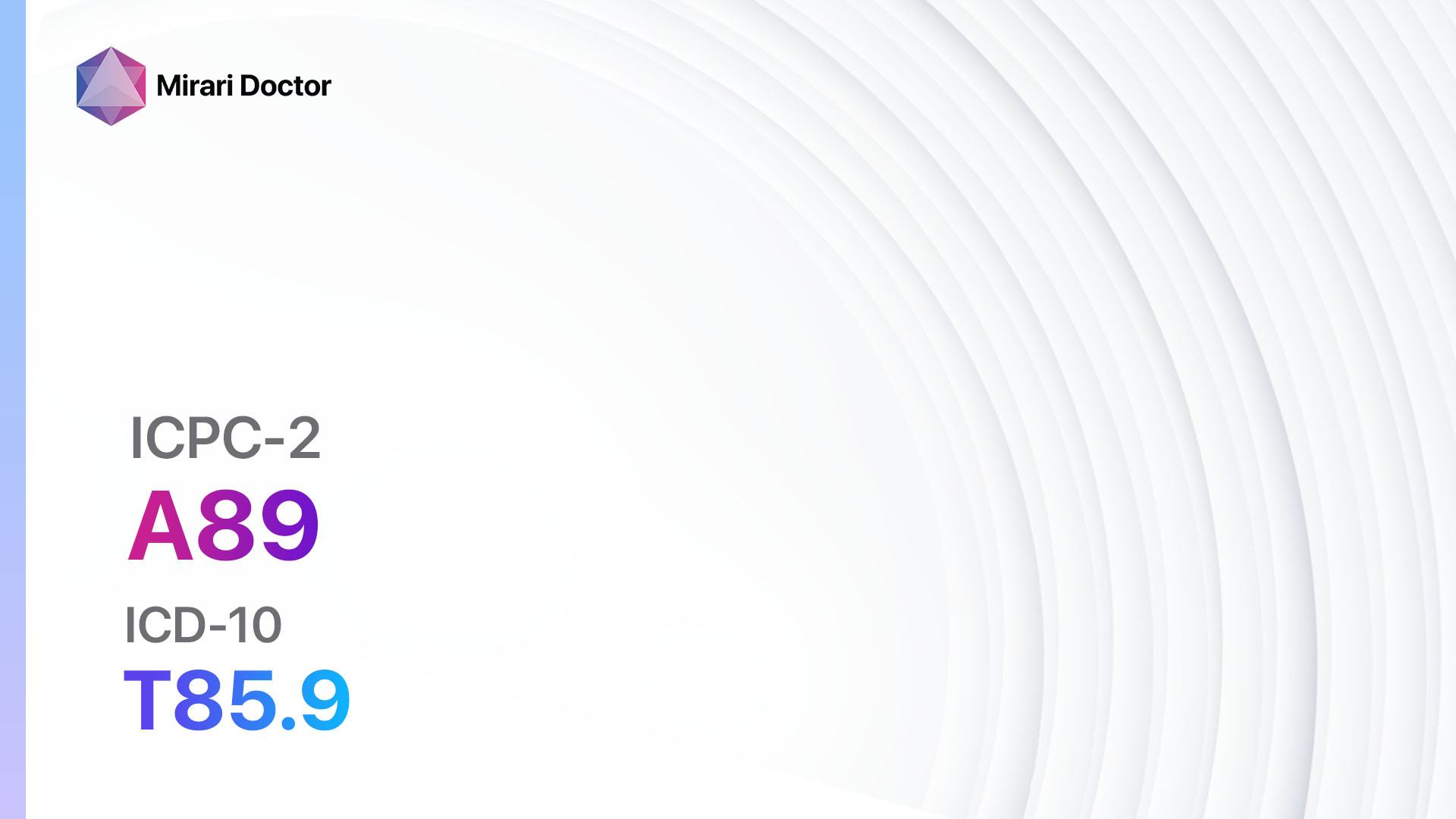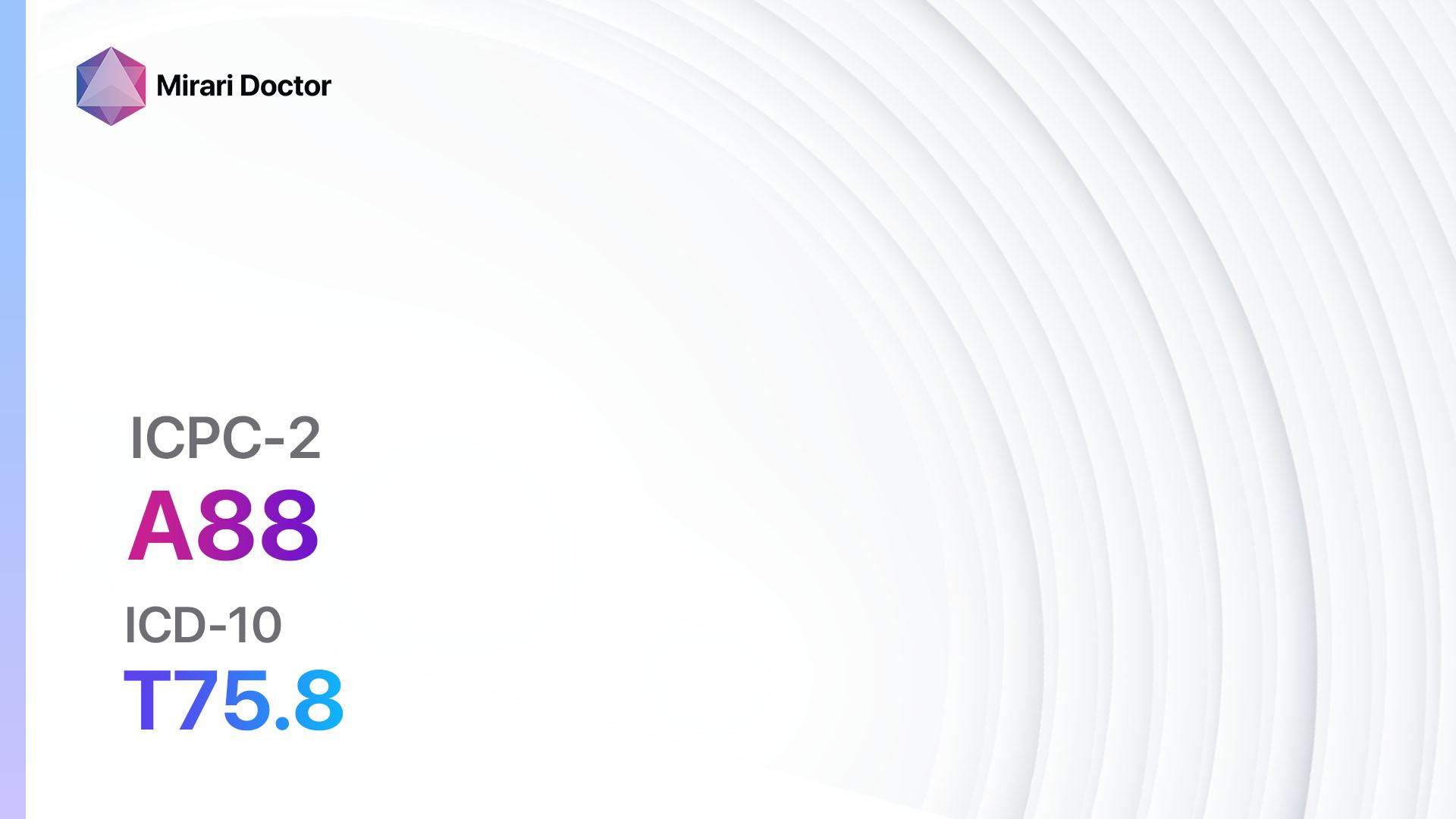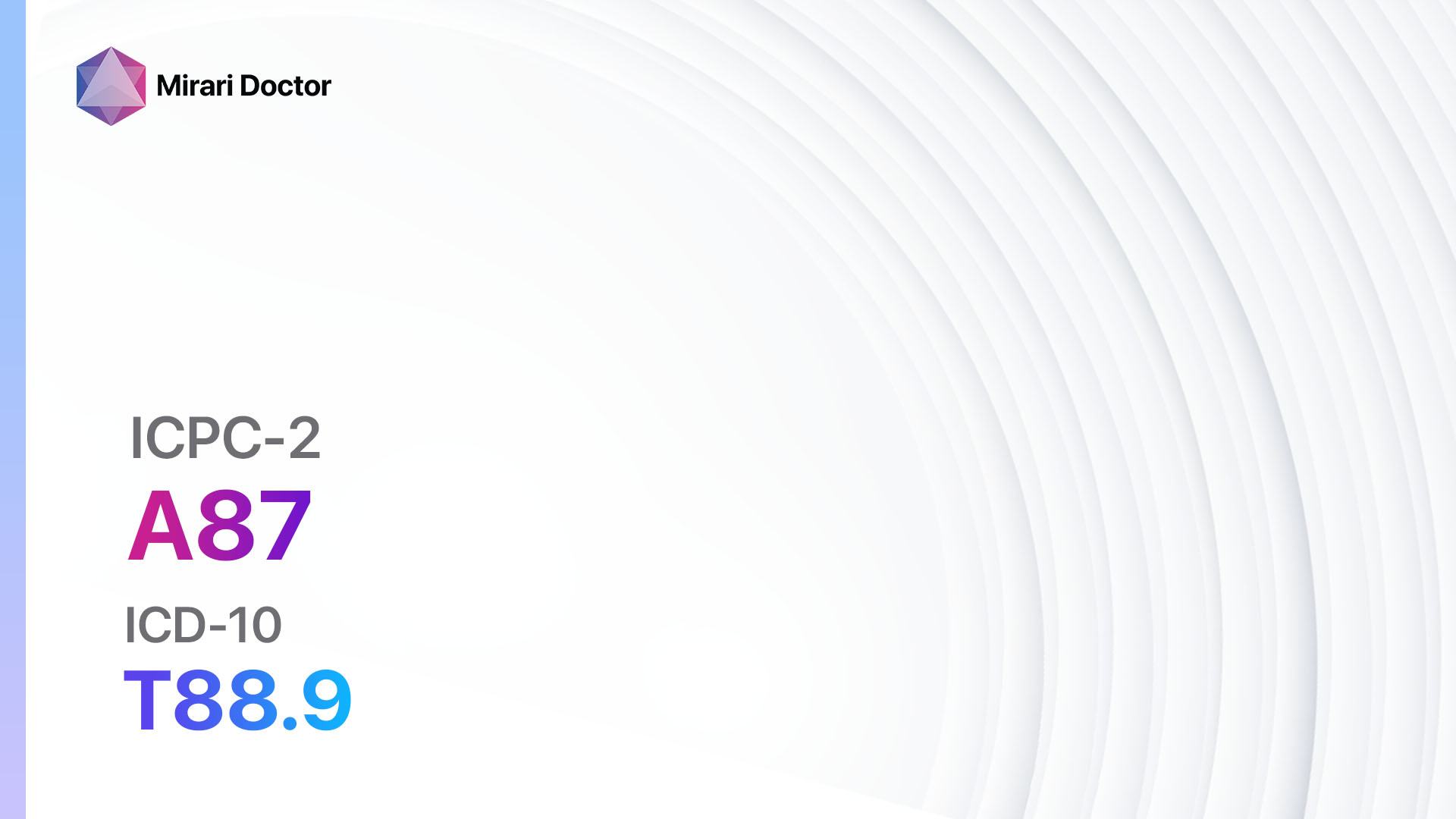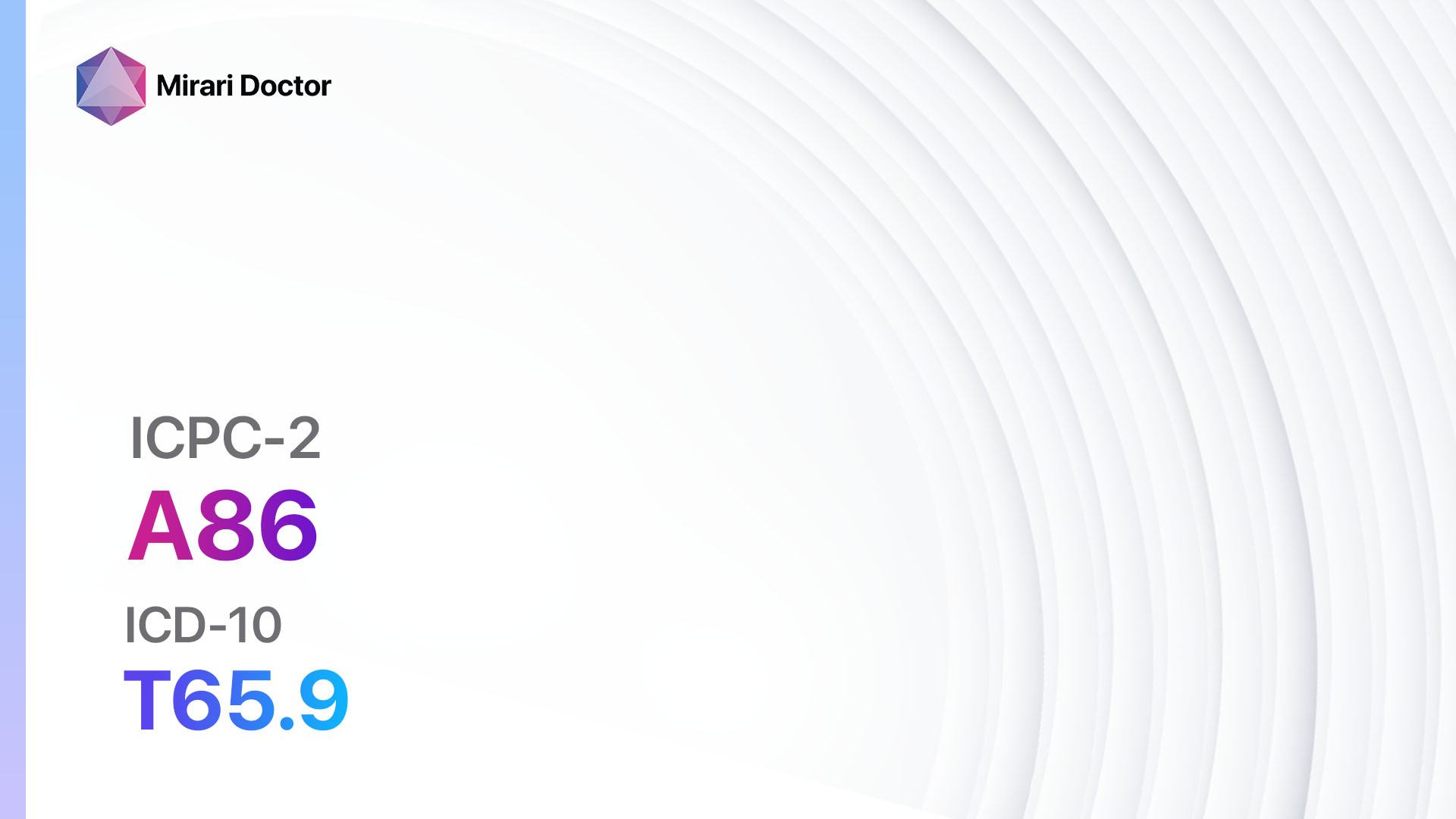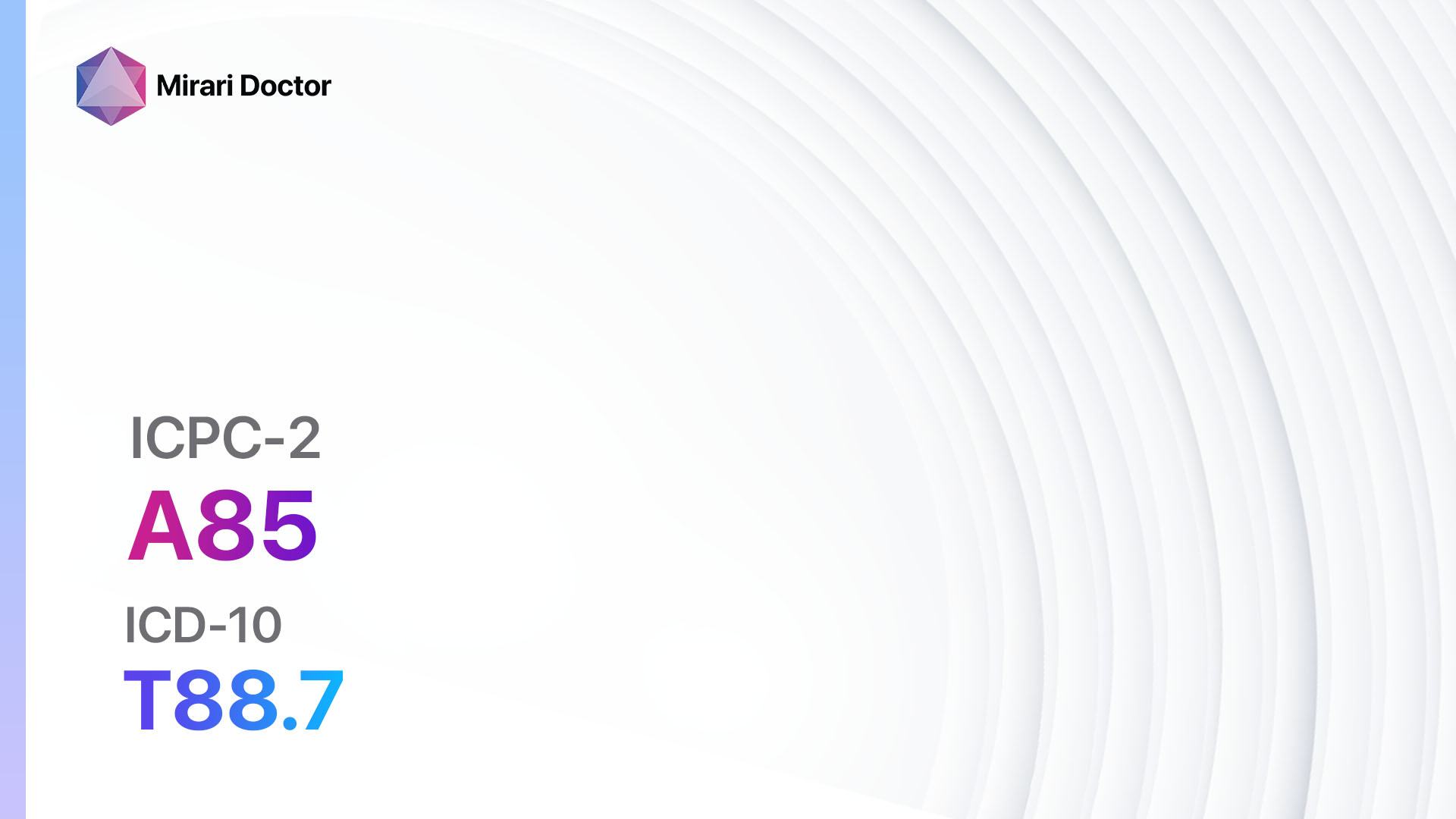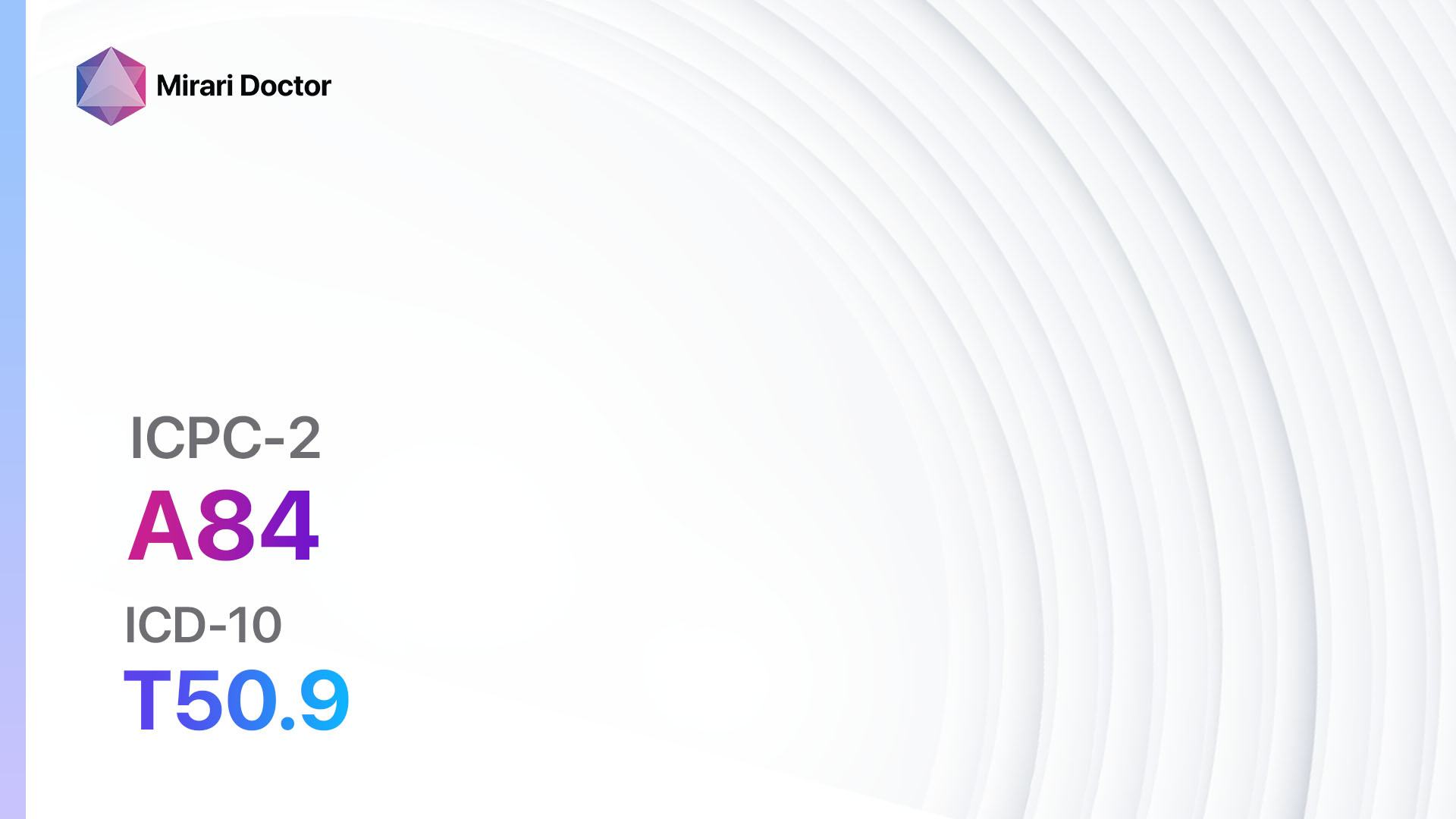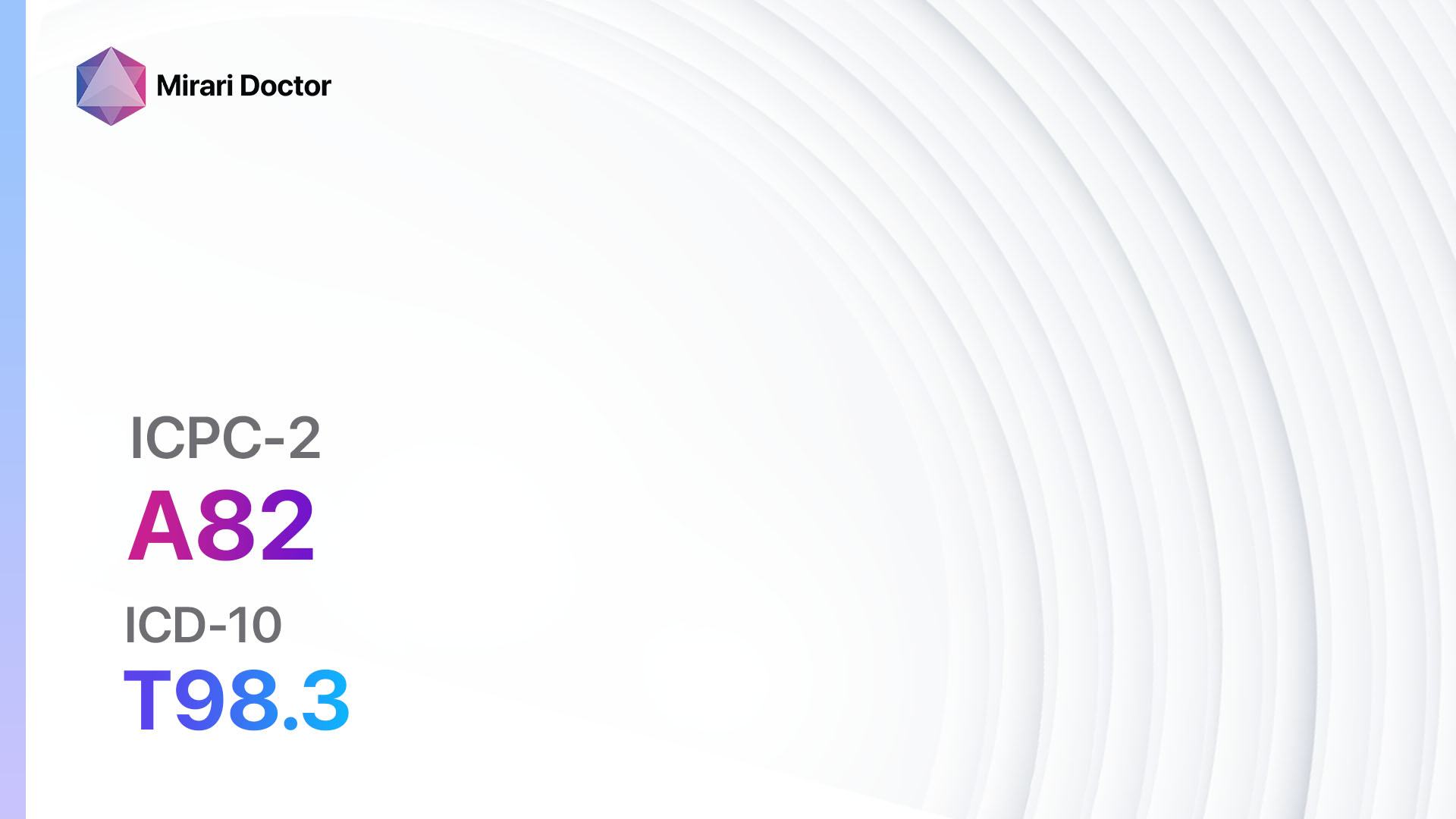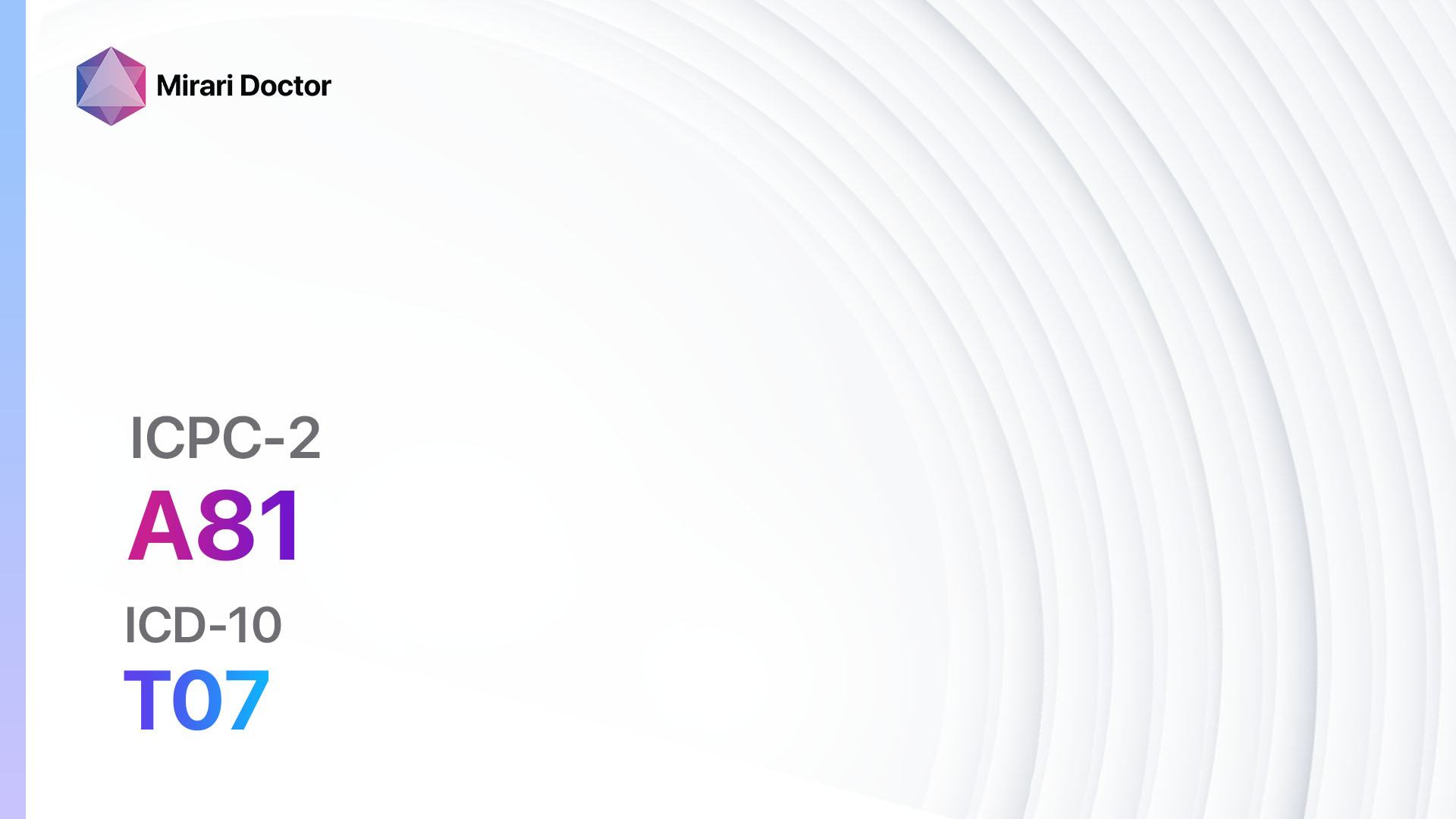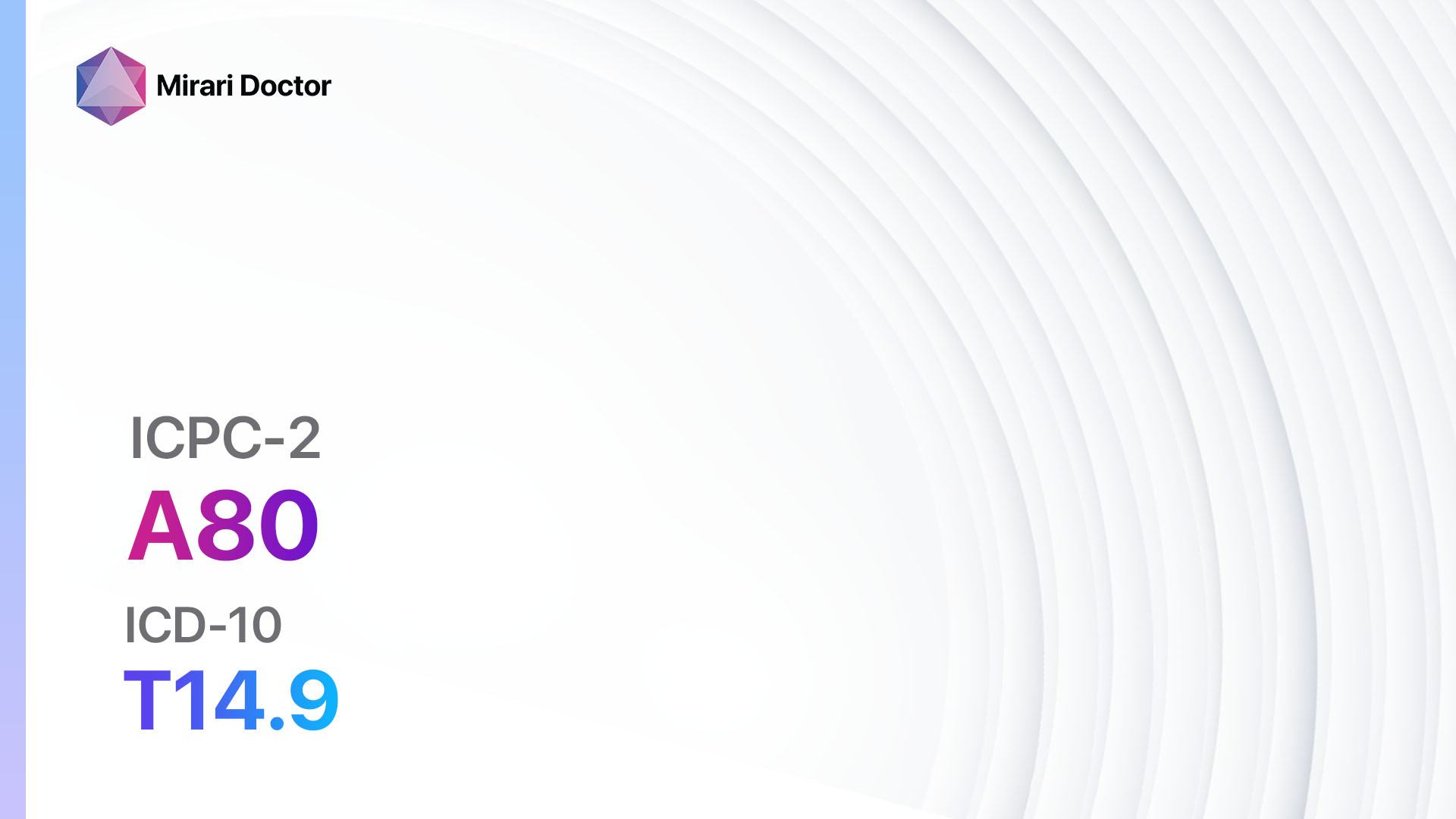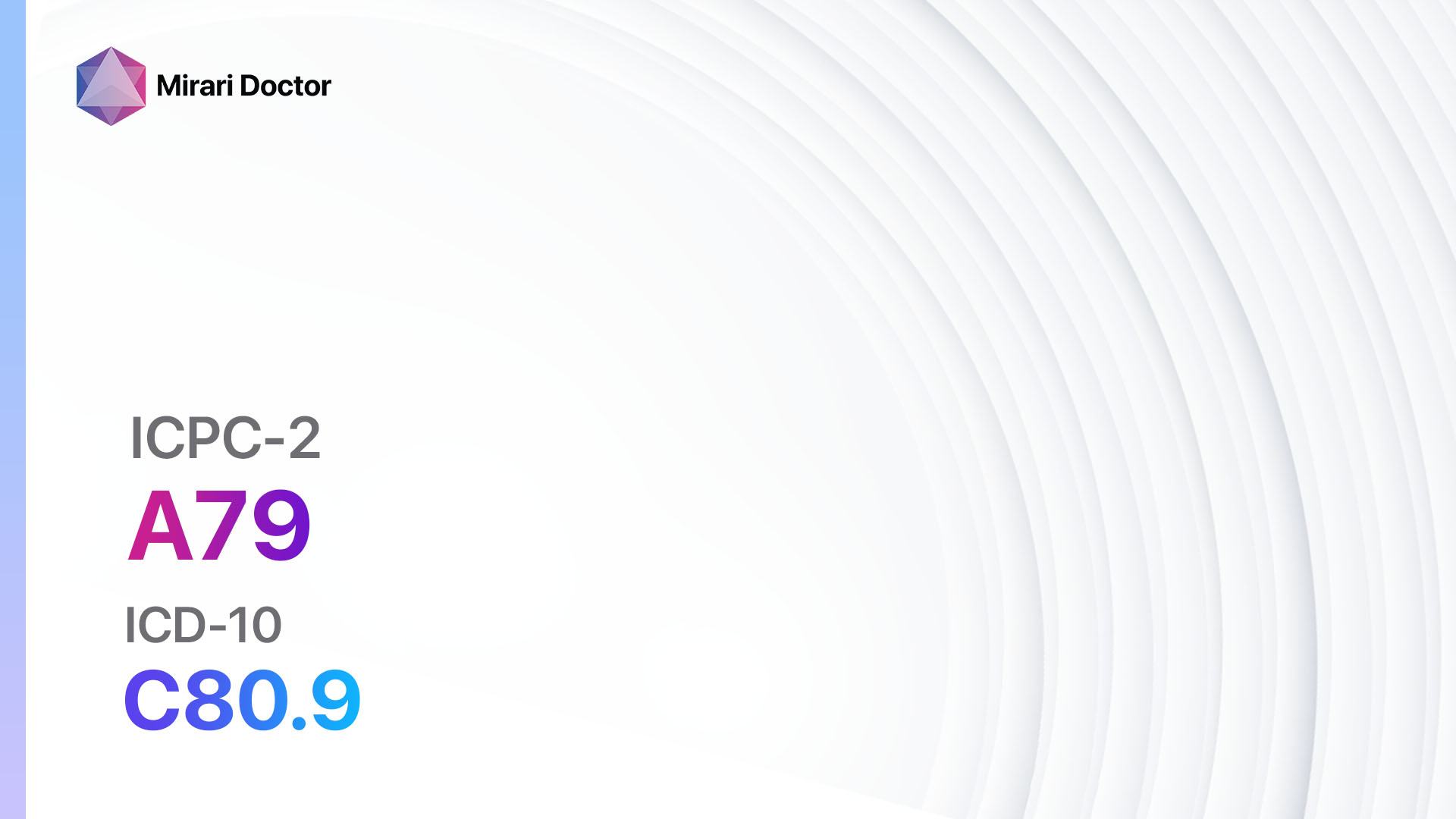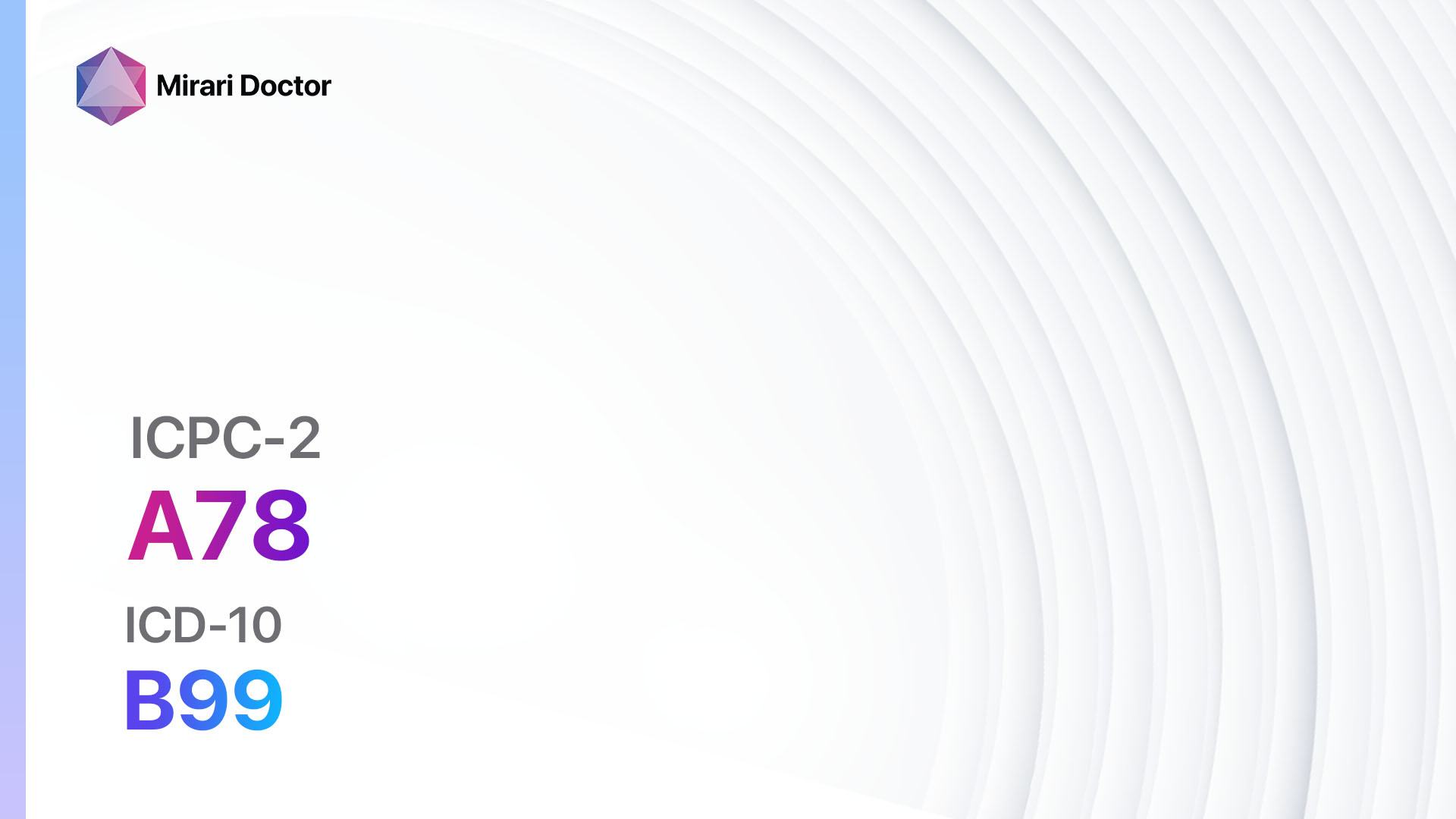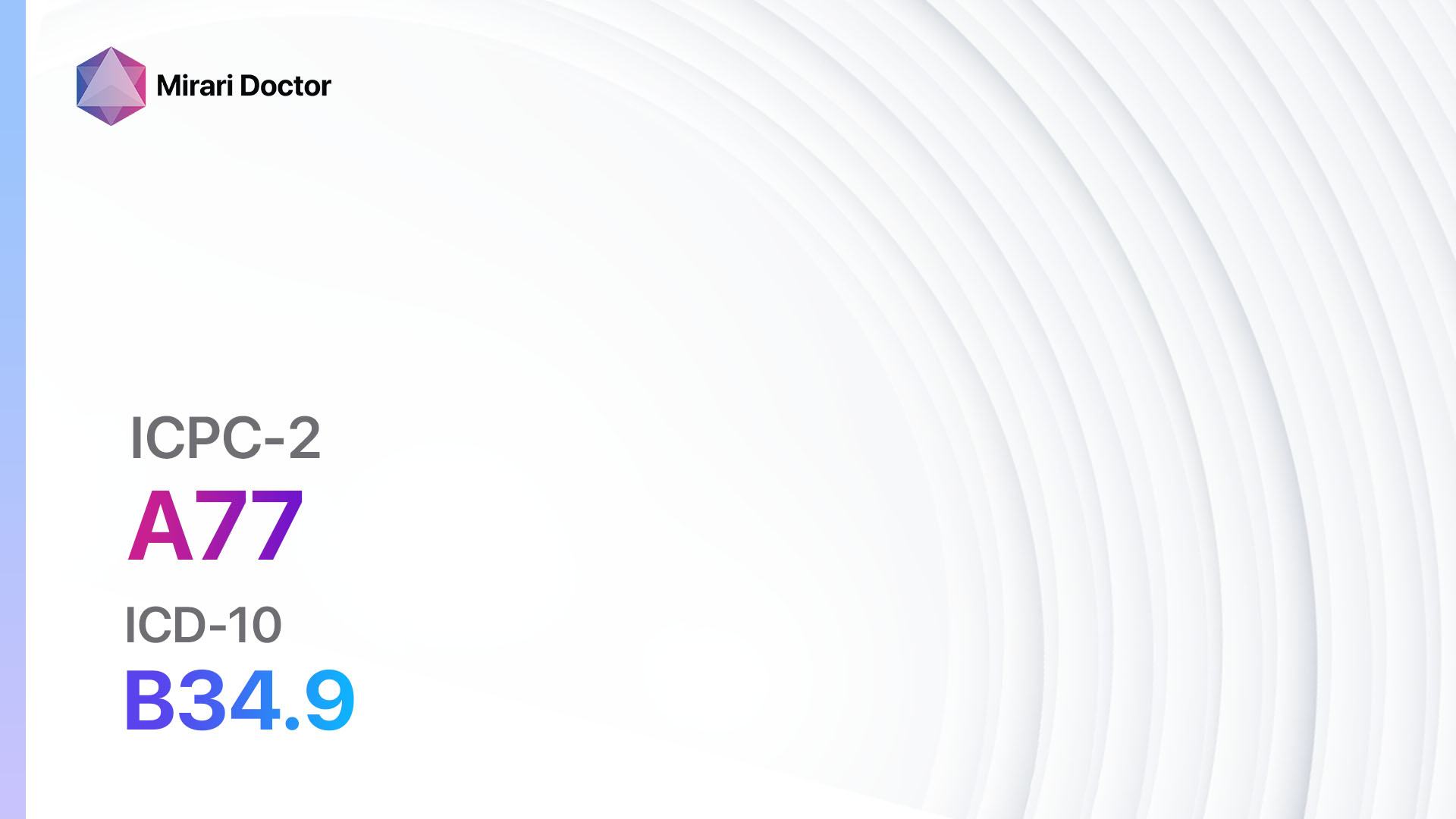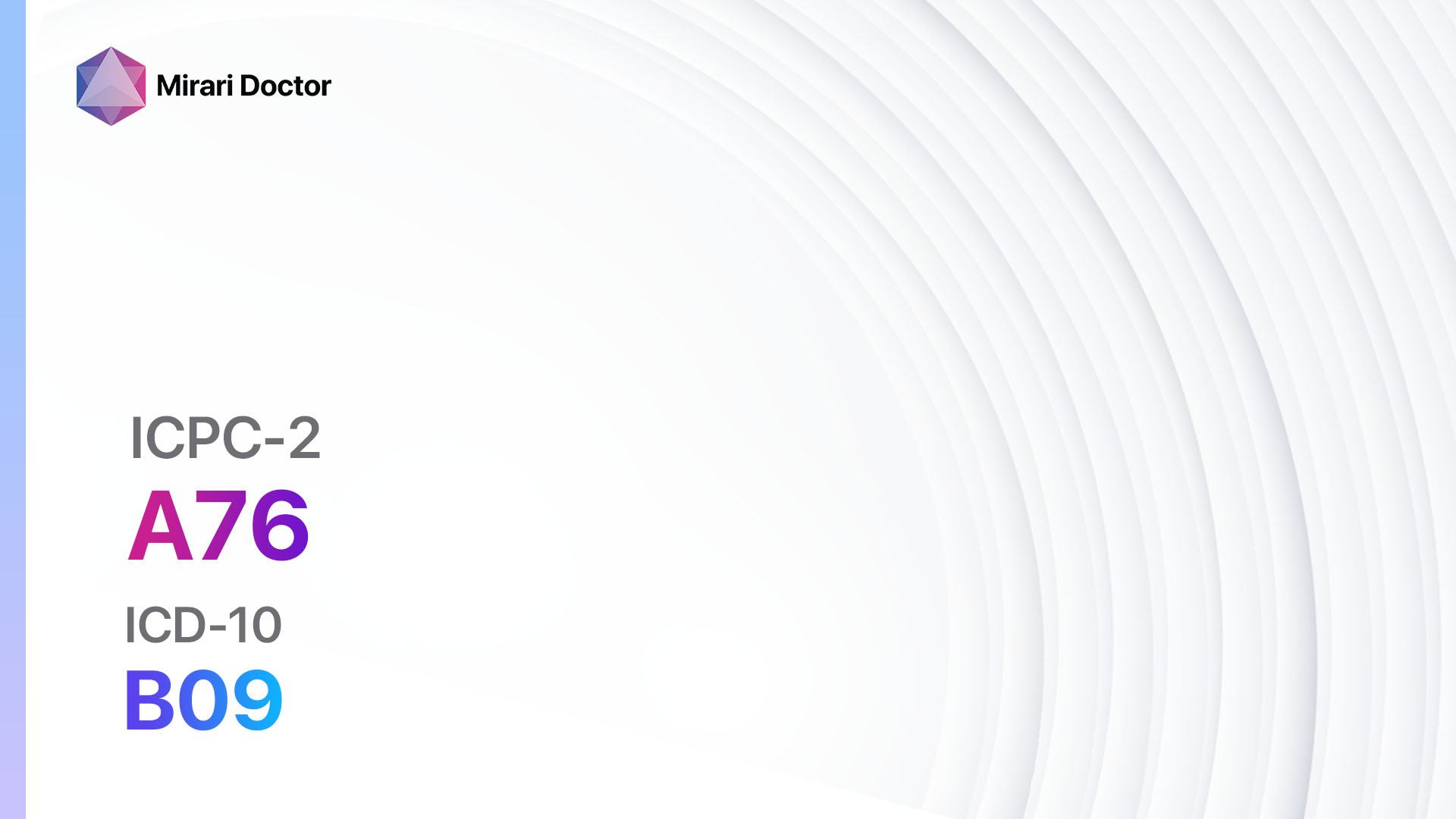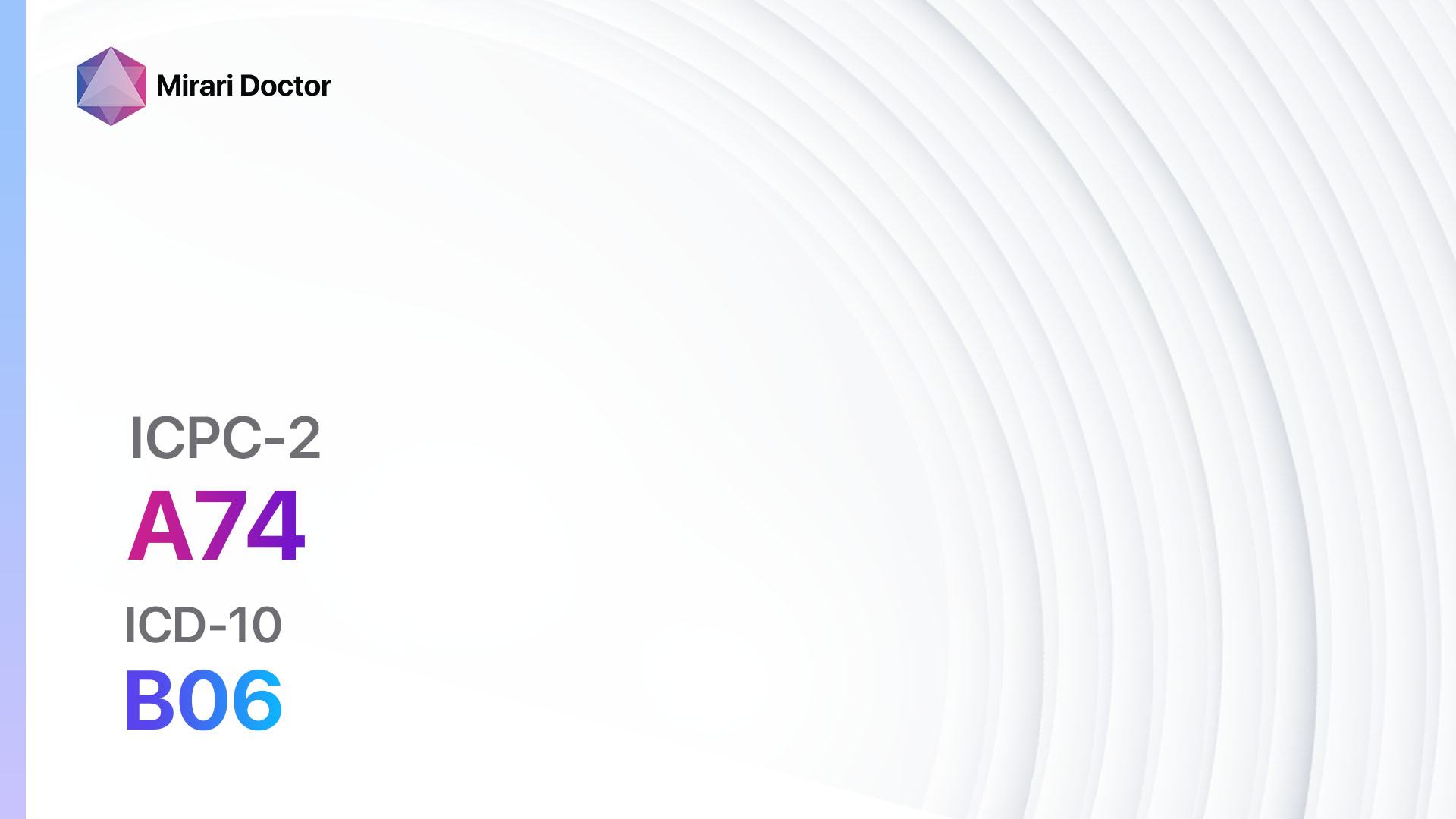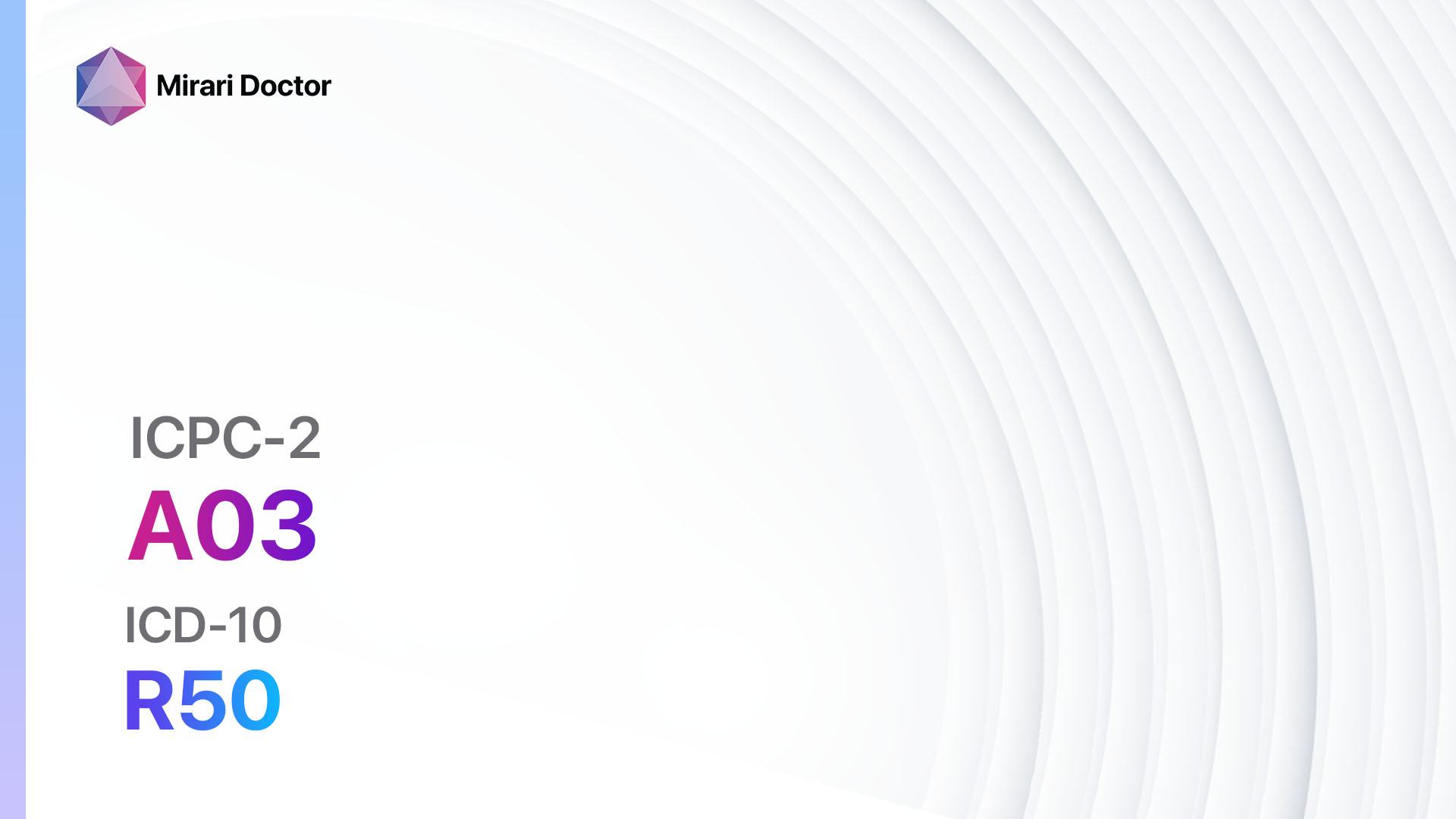
Introduction
Fever is a common symptom characterized by an increase in body temperature above the normal range. It is often a sign of an underlying infection or inflammation.[1][2] This guide aims to provide healthcare professionals with a comprehensive approach to diagnosing and managing fever in patients.
Codes
Symptoms
- Elevated body temperature: Fever is defined as a body temperature above 100.4°F (38°C).[5]
- Chills and sweating: Patients may experience alternating sensations of feeling cold and shivering, followed by sweating as the body tries to regulate temperature.[1]
- Headache: Fever can be accompanied by a headache, which may range from mild to severe.[1]
- Muscle aches: Patients may experience generalized body aches and muscle soreness.[1]
- Fatigue: Fever can cause feelings of tiredness and lethargy.[1]
- Loss of appetite: Patients may have a reduced desire to eat.[1]
- Increased heart rate: Fever can lead to an elevated heart rate.[6]
Causes
- Infections: Fever is commonly caused by bacterial, viral, or fungal infections. Common infections include respiratory tract infections, urinary tract infections, and skin infections.[1][7]
- Inflammatory conditions: Fever can be a result of inflammatory conditions such as rheumatoid arthritis, inflammatory bowel disease, or vasculitis.[1]
- Medications: Certain medications, such as antibiotics, can cause drug-induced fever.[8]
- Cancer: Some types of cancer, particularly lymphomas and leukemias, can cause fever.[1]
- Autoimmune disorders: Conditions like lupus or rheumatoid arthritis can lead to fever as a result of the body’s immune system attacking its own tissues.[1]
Diagnostic Steps
Medical History
- Gather information about the patient’s symptoms, including the duration and pattern of fever, associated symptoms, and any recent travel or exposure to infectious agents.[9]
- Identify any underlying medical conditions or risk factors that may contribute to fever.[9]
- Determine if the patient has recently started or changed any medications that could be causing drug-induced fever.[8]
Physical Examination
- Measure the patient’s body temperature using a reliable thermometer.[9]
- Assess the patient’s general appearance, looking for signs of distress or dehydration.[9]
- Examine the patient’s skin for rashes or other signs of infection.[9]
- Palpate lymph nodes to check for enlargement, which may indicate an underlying infection.[9]
- Listen to the patient’s heart and lungs for any abnormal sounds.[9]
Laboratory Tests
- Complete blood count (CBC): This test can help identify an elevated white blood cell count, which may indicate an infection.[9]
- Blood cultures: Culturing the blood can help identify the presence of bacteria or fungi in the bloodstream.[9]
- Urinalysis: A urine test can detect the presence of a urinary tract infection.[9]
- Chest X-ray: This imaging test can help identify any lung infections or other abnormalities.[9]
- Other specialized tests: Depending on the suspected cause of fever, additional tests such as throat swabs, stool cultures, or serological tests may be necessary.[9]
Diagnostic Imaging
- Chest X-ray: This imaging modality can help identify any lung infections or other abnormalities.[9]
- Abdominal ultrasound: An ultrasound of the abdomen may be useful in identifying any underlying infections or abnormalities in the abdominal organs.[9]
- CT scan: A CT scan can provide detailed images of the body and may be necessary to evaluate specific areas of concern.[9]
Other Tests
- Lumbar puncture: If meningitis is suspected, a lumbar puncture may be performed to collect cerebrospinal fluid for analysis.[10]
- Biopsy: In cases where cancer or an autoimmune disorder is suspected, a biopsy may be necessary to obtain a tissue sample for further evaluation.
Follow-up and Patient Education
- Schedule a follow-up appointment to monitor the patient’s progress and response to treatment.[9]
- Provide the patient with information about the underlying cause of their fever and any necessary lifestyle modifications or precautions.[9]
- Educate the patient about the importance of completing any prescribed medications and seeking medical attention if their symptoms worsen or new symptoms develop.[9]
Possible Interventions
Traditional Interventions
Medications:
Top 5 drugs for Fever:
- Acetaminophen (e.g., Tylenol):
- Cost: $5-$10 for a bottle of generic acetaminophen.
- Contraindications: Hypersensitivity to acetaminophen.
- Side effects: Rare, but can include rash or allergic reactions.
- Severe side effects: Liver damage in high doses.
- Drug interactions: Alcohol, certain medications metabolized by the liver.
- Warning: Do not exceed the recommended dosage.
- Ibuprofen (e.g., Advil, Motrin):
- Cost: $5-$10 for a bottle of generic ibuprofen.
- Contraindications: Active peptic ulcer disease, history of gastrointestinal bleeding, hypersensitivity to ibuprofen.
- Side effects: Upset stomach, heartburn.
- Severe side effects: Gastrointestinal bleeding, kidney problems.
- Drug interactions: Aspirin, other nonsteroidal anti-inflammatory drugs (NSAIDs).
- Warning: Do not exceed the recommended dosage or use for prolonged periods without medical supervision.
- Naproxen (e.g., Aleve):
- Cost: $5-$10 for a bottle of generic naproxen.
- Contraindications: Active peptic ulcer disease, history of gastrointestinal bleeding, hypersensitivity to naproxen.
- Side effects: Upset stomach, heartburn.
- Severe side effects: Gastrointestinal bleeding, kidney problems.
- Drug interactions: Aspirin, other NSAIDs.
- Warning: Do not exceed the recommended dosage or use for prolonged periods without medical supervision.
- Antibiotics (e.g., Amoxicillin, Azithromycin):
- Cost: Varies depending on the specific antibiotic and insurance coverage.
- Contraindications: Hypersensitivity to the specific antibiotic.
- Side effects: Nausea, diarrhea.
- Severe side effects: Allergic reactions, antibiotic resistance.
- Drug interactions: Certain medications, such as warfarin or oral contraceptives, may be affected by antibiotics.
- Warning: Take the full course of antibiotics as prescribed, even if symptoms improve.
- Antiviral medications (e.g., Oseltamivir, Acyclovir):
- Cost: Varies depending on the specific antiviral medication and insurance coverage.
- Contraindications: Hypersensitivity to the specific antiviral medication.
- Side effects: Nausea, headache.
- Severe side effects: Allergic reactions, rare neuropsychiatric events.
- Drug interactions: Certain medications may interact with antiviral medications.
- Warning: Start antiviral treatment as soon as possible after symptom onset for maximum effectiveness.
Alternative Drugs:
- Herbal remedies: Some herbal remedies, such as Echinacea or elderberry, are believed to have immune-boosting properties. Cost: Varies depending on the specific product.
- Homeopathic remedies: Homeopathic remedies, such as Oscillococcinum, are commonly used for fever relief. Cost: Varies depending on the specific product.
- Essential oils: Certain essential oils, such as peppermint or eucalyptus oil, may provide relief from fever symptoms. Cost: Varies depending on the specific oil.
Surgical Procedures:
- Surgical intervention is not typically indicated for the treatment of fever. However, in cases where an underlying condition requires surgical management, appropriate procedures should be considered based on the specific diagnosis.
Alternative Interventions
- Cooling measures: Applying cool compresses to the forehead or taking a cool bath can help reduce fever. Cost: Minimal.
- Hydration: Ensuring adequate fluid intake can help prevent dehydration and support the body’s immune response. Cost: Minimal.
- Rest: Getting plenty of rest can aid in the recovery process and help the body fight off infection. Cost: Minimal.
- Herbal remedies: Some herbal remedies, such as ginger or chamomile tea, may help reduce fever and promote relaxation. Cost: Varies depending on the specific product.
- Homeopathic remedies: Homeopathic remedies, such as Belladonna or Aconitum, are commonly used for fever relief. Cost: Varies depending on the specific product.
Lifestyle Interventions
- Maintain good hygiene: Practicing good hygiene, such as regular handwashing, can help prevent the spread of infections. Cost: Minimal.
- Avoid exposure to sick individuals: Minimizing contact with individuals who are sick can reduce the risk of contracting infections. Cost: Minimal.
- Stay hydrated: Drinking plenty of fluids can help support the body’s immune response and prevent dehydration. Cost: Minimal.
- Get adequate rest: Getting enough sleep and rest can support the body’s healing process. Cost: Minimal.
- Eat a balanced diet: Consuming a nutritious diet can help support the immune system and overall health. Cost: Varies depending on food choices.
It is important to note that the cost ranges provided are approximate and may vary depending on the location and availability of the interventions.
Mirari Cold Plasma Alternative Intervention
Understanding Mirari Cold Plasma
- Safe and Non-Invasive Treatment: Mirari Cold Plasma is a safe and non-invasive treatment option for various skin conditions. It does not require incisions, minimizing the risk of scarring, bleeding, or tissue damage.
- Efficient Extraction of Foreign Bodies: Mirari Cold Plasma facilitates the removal of foreign bodies from the skin by degrading and dissociating organic matter, allowing easier access and extraction.
- Pain Reduction and Comfort: Mirari Cold Plasma has a local analgesic effect, providing pain relief during the treatment, making it more comfortable for the patient.
- Reduced Risk of Infection: Mirari Cold Plasma has antimicrobial properties, effectively killing bacteria and reducing the risk of infection.
- Accelerated Healing and Minimal Scarring: Mirari Cold Plasma stimulates wound healing and tissue regeneration, reducing healing time and minimizing the formation of scars.
Mirari Cold Plasma Prescription
Video instructions for using Mirari Cold Plasma Device – A03 Fever (ICD-10:R50)
| Mild | Moderate | Severe |
| Mode setting: 1 (Infection) Location: 0 (Localized) Morning: 15 minutes, Evening: 15 minutes |
Mode setting: 1 (Infection) Location: 0 (Localized) Morning: 30 minutes, Lunch: 30 minutes, Evening: 30 minutes |
Mode setting: 1 (Infection) Location: 0 (Localized) Morning: 30 minutes, Lunch: 30 minutes, Evening: 30 minutes |
| Mode setting: 2 (Wound Healing) Location: 7 (Neuro system & ENT) Morning: 15 minutes, Evening: 15 minutes |
Mode setting: 2 (Wound Healing) Location: 7 (Neuro system & ENT) Morning: 30 minutes, Lunch: 30 minutes, Evening: 30 minutes |
Mode setting: 2 (Wound Healing) Location: 7 (Neuro system & ENT) Morning: 30 minutes, Lunch: 30 minutes, Evening: 30 minutes |
| Mode setting: 3 (Antiviral Therapy) Location: 6 (Throat, Lymphatic & Thyroid) Morning: 15 minutes, Evening: 15 minutes |
Mode setting: 3 (Antiviral Therapy) Location: 6 (Throat, Lymphatic & Thyroid) Morning: 30 minutes, Lunch: 30 minutes, Evening: 30 minutes |
Mode setting: 3 (Antiviral Therapy) Location: 6 (Throat, Lymphatic & Thyroid) Morning: 30 minutes, Lunch: 30 minutes, Evening: 30 minutes |
| Mode setting: 7 (Immunotherapy) Location: 1 (Sacrum) Morning: 15 minutes, Evening: 15 minutes |
Mode setting: 7 (Immunotherapy) Location: 1 (Sacrum) Morning: 30 minutes, Lunch: 30 minutes, Evening: 30 minutes |
Mode setting: 7 (Immunotherapy) Location: 1 (Sacrum) Morning: 30 minutes, Lunch: 30 minutes, Evening: 30 minutes |
| Total Morning: 60 minutes approx. $10 USD, Evening: 60 minutes approx. $10 USD |
Total Morning: 120 minutes approx. $20 USD, Lunch: 120 minutes approx. $20 USD, Evening: 120 minutes approx. $20 USD, |
Total Morning: 120 minutes approx. $20 USD, Lunch: 120 minutes approx. $20 USD, Evening: 120 minutes approx. $20 USD, |
| Usual treatment for 7-60 days approx. $140 USD – $1200 USD | Usual treatment for 6-8 weeks approx. $2,520 USD – $3,360 USD |
Usual treatment for 3-6 months approx. $5,400 USD – $10,800 USD
|
 |
|
Use the Mirari Cold Plasma device to treat Fever effectively.
WARNING: MIRARI COLD PLASMA IS DESIGNED FOR THE HUMAN BODY WITHOUT ANY ARTIFICIAL OR THIRD PARTY PRODUCTS. USE OF OTHER PRODUCTS IN COMBINATION WITH MIRARI COLD PLASMA MAY CAUSE UNPREDICTABLE EFFECTS, HARM OR INJURY. PLEASE CONSULT A MEDICAL PROFESSIONAL BEFORE COMBINING ANY OTHER PRODUCTS WITH USE OF MIRARI.
Step 1: Cleanse the Skin
- Start by cleaning the affected area of the skin with a gentle cleanser or mild soap and water. Gently pat the area dry with a clean towel.
Step 2: Prepare the Mirari Cold Plasma device
- Ensure that the Mirari Cold Plasma device is fully charged or has fresh batteries as per the manufacturer’s instructions. Make sure the device is clean and in good working condition.
- Switch on the Mirari device using the power button or by following the specific instructions provided with the device.
- Some Mirari devices may have adjustable settings for intensity or treatment duration. Follow the manufacturer’s instructions to select the appropriate settings based on your needs and the recommended guidelines.
Step 3: Apply the Device
- Place the Mirari device in direct contact with the affected area of the skin. Gently glide or hold the device over the skin surface, ensuring even coverage of the area experiencing.
- Slowly move the Mirari device in a circular motion or follow a specific pattern as indicated in the user manual. This helps ensure thorough treatment coverage.
Step 4: Monitor and Assess:
- Keep track of your progress and evaluate the effectiveness of the Mirari device in managing your Fever. If you have any concerns or notice any adverse reactions, consult with your health care professional.
Note
This guide is for informational purposes only and should not replace the advice of a medical professional. Always consult with your healthcare provider or a qualified medical professional for personal advice, diagnosis, or treatment. Do not solely rely on the information presented here for decisions about your health. Use of this information is at your own risk. The authors of this guide, nor any associated entities or platforms, are not responsible for any potential adverse effects or outcomes based on the content.
Mirari Cold Plasma System Disclaimer
- Purpose: The Mirari Cold Plasma System is a Class 2 medical device designed for use by trained healthcare professionals. It is registered for use in Thailand and Vietnam. It is not intended for use outside of these locations.
- Informational Use: The content and information provided with the device are for educational and informational purposes only. They are not a substitute for professional medical advice or care.
- Variable Outcomes: While the device is approved for specific uses, individual outcomes can differ. We do not assert or guarantee specific medical outcomes.
- Consultation: Prior to utilizing the device or making decisions based on its content, it is essential to consult with a Certified Mirari Tele-Therapist and your medical healthcare provider regarding specific protocols.
- Liability: By using this device, users are acknowledging and accepting all potential risks. Neither the manufacturer nor the distributor will be held accountable for any adverse reactions, injuries, or damages stemming from its use.
- Geographical Availability: This device has received approval for designated purposes by the Thai and Vietnam FDA. As of now, outside of Thailand and Vietnam, the Mirari Cold Plasma System is not available for purchase or use.
References
- Fever – Wikipedia. https://en.wikipedia.org/wiki/Fever
- Physiology, Fever – StatPearls – NCBI Bookshelf. https://www.ncbi.nlm.nih.gov/books/NBK562334/
- ICPC-2 Code: A03 Fever – RxReasoner. https://www.rxreasoner.com/icpc2codes/A03
- ICD-10-CM Code for Fever of other and unknown origin R50 – AAPC. https://www.aapc.com/codes/icd-10-codes/R50
- Fever (High Temperature): Causes, Symptoms, and Treatment – Patient.info. https://patient.info/signs-symptoms/fever
- Fever: Symptoms, treatments, types, and causes – Medical News Today. https://www.medicalnewstoday.com/articles/168266
- Fever in adults: Characteristics, classification and when is it serious? – Vinmec. https://www.vinmec.com/en/news/health-news/general-health-check/fever-in-adults-characteristics-classification-and-when-serious/
- Fever and fever management among intensive care patients with … – PubMed. https://pubmed.ncbi.nlm.nih.gov/21627577/
- Fever – Diagnosis and treatment – Mayo Clinic. https://www.mayoclinic.org/diseases-conditions/fever/diagnosis-treatment/drc-20352759
- Meningitis – Symptoms and causes – Mayo Clinic. https://www.mayoclinic.org/diseases-conditions/meningitis/symptoms-causes/syc-20350508
Related articles
Made in USA


